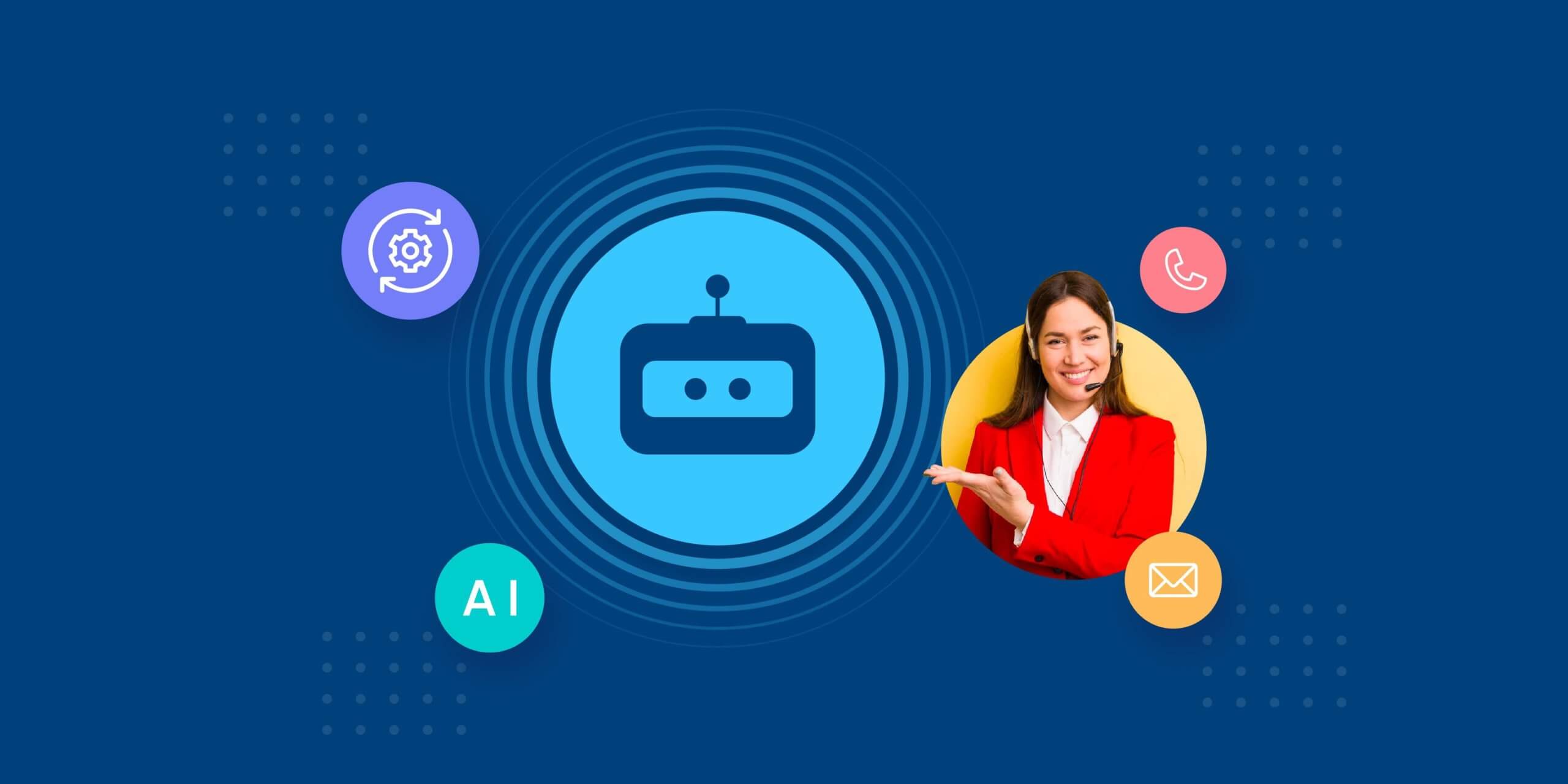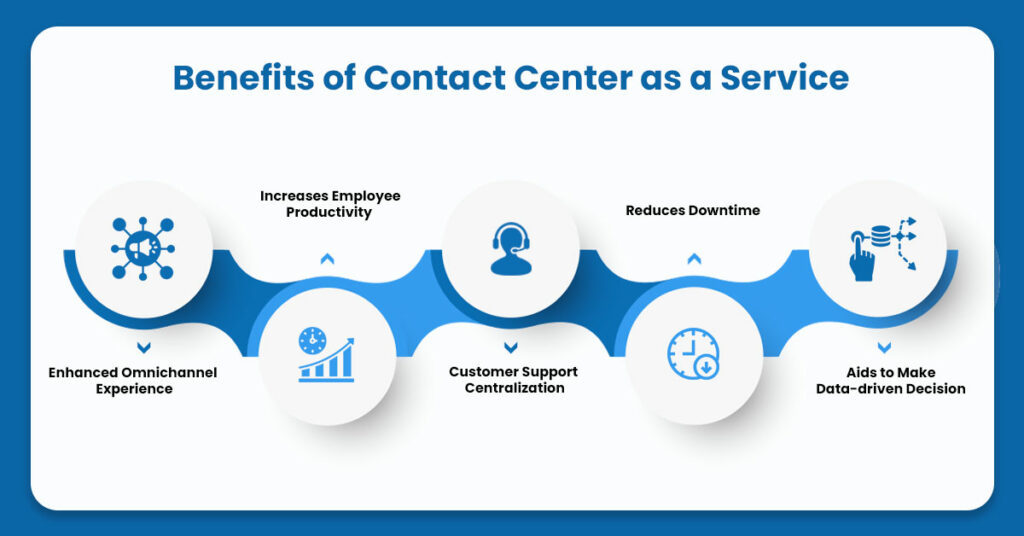Introduction
In today’s fast-paced business environment, contact centers are pivotal in ensuring seamless customer experiences. They act as the primary touchpoint for customer inquiries, complaints, and support, significantly influencing customer satisfaction and loyalty. The traditional model of contact centers, however, faces numerous challenges, including high operational costs, inconsistent service quality, and inefficiencies in handling large volumes of interactions. To address these challenges, organizations are increasingly turning to contact center automation by using IT solutions. This article delves into the transformative power of IT in automating contact centers, exploring the benefits, implementation strategies, and future trends in this domain.
The Evolution of Contact Centers
Traditional Contact Centers
Historically, contact centers have relied heavily on human agents to manage customer interactions. These centers were typically characterized by:
- Manual Call Handling: Agents manually answered calls, addressed queries, and logged interactions.
- High Operational Costs: The need for a large workforce to manage peak volumes resulted in substantial labor costs.
- Inconsistent Service Quality: Variability in agent performance led to inconsistent customer experiences.
- Limited Scalability: Scaling operations to meet increasing demand was challenging due to recruitment and training constraints.
Emergence of IT Solutions
The advent of information technology (IT) brought significant changes to contact centers. IT solutions enabled the automation of various tasks, leading to:
- Improved Efficiency: Automated systems could handle repetitive tasks, freeing agents to focus on complex issues.
- Cost Reduction: Automation reduced the need for a large workforce, cutting operational expenses.
- Enhanced Customer Experience: Consistent and prompt responses improved customer satisfaction.
- Scalability: IT solutions allowed for easy scaling of operations without proportional increases in staffing.
Key Technologies Driving Contact Center Automation
Contact center automation by using IT encompasses a range of technologies designed to streamline operations and enhance customer interactions. The key technologies include:
Artificial Intelligence (AI) and Machine Learning (ML)
AI and ML are at the forefront of contact center automation. These technologies enable:
- Predictive Analytics: Analyzing customer data to predict needs and preferences, allowing for proactive service.
- Chatbots and Virtual Assistants: Providing instant responses to common queries, reducing wait times and improving accessibility.
- Sentiment Analysis: Understanding customer emotions through text and voice analysis to tailor responses and escalate issues appropriately.
Robotic Process Automation (RPA)

RPA involves using software robots to automate repetitive, rule-based tasks. In contact centers, RPA can:
- Automate Data Entry: Reducing errors and freeing agents from mundane tasks.
- Handle Routine Inquiries: Managing simple customer requests without human intervention.
- Streamline Back-Office Operations: Automating processes like billing, account updates, and order tracking.
Natural Language Processing (NLP)
NLP enables machines to understand and respond to human language. In contact centers, NLP can be used for:
- Voice Recognition: Allowing customers to interact with systems using voice commands.
- Text Analysis: Interpreting customer emails, chat messages, and social media posts to provide relevant responses.
- Speech-to-Text Transcription: Converting voice interactions into text for easier analysis and record-keeping.
Cloud Computing
Cloud-based solutions offer scalability, flexibility, and cost-efficiency. Benefits of cloud computing in contact centers include:
- Remote Accessibility: Enabling agents to work from anywhere, enhancing workforce flexibility.
- Scalability: Easily scaling operations to meet demand fluctuations without significant infrastructure investments.
- Integration with Other Systems: Facilitating seamless integration with CRM, ERP, and other business systems.
Omnichannel Communication Platforms
Modern contact centers leverage omnichannel platforms to provide a unified customer experience across various channels, including:
- Voice: Traditional phone calls managed efficiently through automated systems.
- Email: Automated responses and routing to appropriate departments.
- Chat: Instant messaging through web and mobile apps, supported by chatbots for initial interaction.
- Social Media: Monitoring and responding to customer interactions on platforms like Facebook, Twitter, and Instagram.
Benefits of Contact Center Automation
Implementing contact center automation by using IT solutions offers numerous benefits:

Cost Savings
Automation significantly reduces operational costs by minimizing the need for a large workforce and reducing errors associated with manual processes. IT solutions streamline workflows, leading to more efficient resource utilization.
Enhanced Customer Experience
Automated systems provide consistent and prompt responses, improving customer satisfaction. Features like predictive analytics and sentiment analysis enable personalized interactions, further enhancing the customer experience.
Increased Efficiency
Automation handles repetitive and time-consuming tasks, allowing human agents to focus on complex and value-added activities. This improves overall productivity and reduces the average handling time for customer inquiries.
Scalability and Flexibility
Cloud-based solutions and automated systems can easily scale to meet varying demand levels without significant investments in infrastructure or staffing. This flexibility is crucial for businesses experiencing rapid growth or seasonal fluctuations.
Improved Accuracy and Compliance
Automated systems reduce the likelihood of human errors, ensuring more accurate data handling and processing. Additionally, they help ensure compliance with industry regulations and standards by consistently following predefined processes and protocols.
Data-Driven Insights
Advanced analytics and reporting capabilities of automated systems provide valuable insights into customer behavior, preferences, and trends. This data can inform strategic decision-making and continuous improvement initiatives.
Implementation Strategies for Contact Center Automation
Successfully implementing contact center automation by using IT requires a strategic approach. Key steps include:
Assessing Current Processes
Conduct a thorough assessment of existing contact center operations to identify areas that can benefit from automation. Analyze workflows, identify bottlenecks, and prioritize processes based on their potential for improvement.
Defining Objectives and KPIs
Clearly define the objectives of automation, such as reducing costs, improving customer satisfaction, or increasing efficiency. Establish key performance indicators (KPIs) to measure the success of automation initiatives.
Selecting the Right Technologies
Choose technologies that align with the specific needs and objectives of the contact center. Consider factors such as integration capabilities, scalability, ease of use, and vendor support when selecting IT solutions.
Ensuring Seamless Integration
Ensure that the selected technologies integrate seamlessly with existing systems and workflows. This involves careful planning and coordination with IT teams to avoid disruptions and ensure a smooth transition.
Training and Change Management
Invest in training programs to ensure that staff are proficient in using new technologies and understand their benefits. Effective change management practices are crucial for gaining employee buy-in and minimizing resistance to automation.
Continuous Monitoring and Improvement
Regularly monitor the performance of automated systems and gather feedback from both customers and agents. Use this data to identify areas for improvement and make necessary adjustments to optimize performance.
Challenges and Considerations in Contact Center Automation
While contact center automation offers significant benefits, it also presents challenges that organizations must address:

Workforce Transition
Automation may lead to workforce displacement, requiring careful management to ensure a smooth transition. This includes retraining employees for new roles and responsibilities, providing career development opportunities, and addressing concerns related to job security.
Balancing Automation and Human Touch
While automation can handle routine tasks efficiently, maintaining a human touch in customer interactions is essential for complex issues and emotional support. Striking the right balance between automation and human involvement is crucial for maintaining customer satisfaction.
Data Privacy and Security
Automated systems handle large volumes of sensitive customer data, making data privacy and security a top priority. Organizations must implement robust security measures and comply with relevant regulations to protect customer information.
Managing Customer Expectations
Customers may have varying preferences for interacting with automated systems versus human agents. Managing these expectations and ensuring a smooth transition to automated services is essential to avoid customer dissatisfaction.
Technical Challenges
Implementing and maintaining automated systems can involve technical challenges, such as integration with existing infrastructure, system reliability, and scalability. Addressing these challenges requires collaboration with IT experts and ongoing investment in technology.
Future Trends in Contact Center Automation
The landscape of contact center automation is continuously evolving, driven by advancements in technology and changing customer expectations. Key future trends include:
Advanced AI and Machine Learning
AI and ML will continue to play a pivotal role in contact center automation. Future advancements will enable more sophisticated predictive analytics, improved natural language understanding, and enhanced sentiment analysis, leading to even more personalized and proactive customer interactions.
Integration of Augmented Reality (AR) and Virtual Reality (VR)
AR and VR technologies have the potential to revolutionize customer support by providing immersive and interactive experiences. For example, AR can be used for remote troubleshooting, allowing customers to receive real-time visual guidance, while VR can enhance training programs for contact center agents.
Expansion of Omnichannel Capabilities
The trend towards omnichannel communication will continue to expand, with more seamless integration across various channels. Future contact centers will provide a unified and consistent customer experience, regardless of the communication channel, enhancing convenience and satisfaction.
Increased Use of Biometrics
Biometric technologies, such as voice recognition and facial recognition, will enhance security and streamline authentication processes in contact centers. This will not only improve security but also enhance the customer experience by reducing the need for repetitive identity verification.
Hyper-Personalization
Advancements in data analytics and AI will enable hyper-personalization, where customer interactions are tailored to individual preferences and needs. This will involve leveraging customer data to deliver highly relevant and contextualized support and recommendations.
Autonomous Contact Centers
The concept of fully autonomous contact centers, where AI-driven systems manage most interactions without human intervention, is gaining traction. While human agents will still be required for complex and emotional support, autonomous contact centers will handle a significant portion of routine inquiries and tasks.
Ethical AI and Responsible Automation
As automation becomes more prevalent, there will be an increased focus on ethical AI and responsible automation practices. This involves ensuring transparency, fairness, and accountability in AI algorithms and addressing concerns related to bias, privacy, and the impact on employment.
FAQ: Contact Center Automation
What is Contact Center Automation?
Q: What is contact center automation?
A: Contact center automation involves using information technology (IT) solutions to streamline and enhance the operations of a contact center. This includes automating repetitive tasks, improving customer interactions, and optimizing overall efficiency using technologies such as AI, RPA, NLP, and cloud computing.
Benefits of Contact Center Automation
Q: What are the primary benefits of automating a contact center?
A: The primary benefits include:
- Cost savings through reduced operational expenses
- Enhanced customer experience with faster and more consistent service
- Increased efficiency by automating repetitive tasks
- Improved scalability to handle varying demand levels
- Better accuracy and compliance with reduced human errors
- Data-driven insights for informed decision-making
Technologies Used in Contact Center Automation
Q: Which technologies are commonly used in contact center automation?
A: Common technologies include:
- Artificial Intelligence (AI): For predictive analytics, chatbots, virtual assistants, and sentiment analysis.
- Robotic Process Automation (RPA): For automating repetitive, rule-based tasks.
- Natural Language Processing (NLP): For understanding and responding to human language.
- Cloud Computing: For scalability, flexibility, and remote accessibility.
- Omnichannel Communication Platforms: For providing a unified customer experience across multiple channels.
Implementing Contact Center Automation
Q: How can a company start implementing contact center automation?
A: Steps to implement contact center automation include:
- Assessing current processes to identify areas for improvement
- Defining clear objectives and key performance indicators (KPIs)
- Selecting appropriate technologies that align with business needs
- Ensuring seamless integration with existing systems
- Providing training and managing change effectively
- Continuously monitoring performance and making necessary adjustments
Challenges of Contact Center Automation
Q: What are some common challenges faced during the implementation of contact center automation?
A: Common challenges include:
- Workforce transition and managing potential displacement of staff
- Balancing automation with maintaining a human touch for complex issues
- Ensuring data privacy and security
- Managing customer expectations and preferences
- Technical challenges related to integration, reliability, and scalability
Impact on Workforce
Q: How does automation affect the workforce in contact centers?
A: Automation can lead to the displacement of certain roles, but it also creates opportunities for employees to focus on more complex and value-added tasks. It requires careful management, including retraining and redeployment of staff to new roles that leverage human skills alongside automated systems.
Customer Experience
Q: How does contact center automation improve customer experience?
A: Automation improves customer experience by providing faster, more consistent responses, reducing wait times, and enabling personalized interactions through predictive analytics and sentiment analysis. It also offers 24/7 availability for handling routine inquiries through chatbots and virtual assistants.
Future Trends
Q: What are the future trends in contact center automation?
A: Future trends include:
- Advanced AI and machine learning for more sophisticated analytics and personalized interactions
- Integration of augmented reality (AR) and virtual reality (VR) for immersive customer support
- Expansion of omnichannel capabilities for a unified customer experience
- Increased use of biometrics for enhanced security and streamlined authentication
- Hyper-personalization of customer interactions based on detailed analytics
- Development of autonomous contact centers handling most interactions without human intervention
- Emphasis on ethical AI and responsible automation practices
Data Privacy and Security
Q: How can contact centers ensure data privacy and security with automation?
A: Ensuring data privacy and security involves implementing robust security measures, such as encryption, access controls, and regular security audits. Compliance with relevant regulations, such as GDPR and CCPA, is also crucial. Continuous monitoring and updating of security protocols are necessary to protect customer information.
Cost Considerations
Q: What are the cost implications of implementing contact center automation?
A: While the initial investment in technology and integration can be significant, the long-term benefits include substantial cost savings through reduced labor expenses, improved efficiency, and lower error rates. The scalability of automated systems also allows for cost-effective handling of increased demand without proportional increases in staffing.
Choosing the Right Vendor
Q: How should a company choose the right vendor for contact center automation solutions?
A: When choosing a vendor, consider factors such as:
- Compatibility with existing systems and workflows
- Scalability and flexibility of the solutions offered
- Support and training provided by the vendor
- Track record and reputation in the industry
- Cost and value proposition
- Security features and compliance with relevant regulations
Measuring Success
Q: How can a company measure the success of its contact center automation initiatives?
A: Success can be measured through various KPIs, including:
- Reduction in operational costs
- Improvement in customer satisfaction scores
- Decrease in average handling time for inquiries
- Increase in first-call resolution rates
- Enhanced employee productivity and engagement
- Accuracy and compliance metrics
- Customer feedback and sentiment analysis results
Maintaining a Human Touch
Q: How can contact centers maintain a human touch while implementing automation?
A: Maintaining a human touch involves:
- Strategically integrating automation to handle routine tasks while reserving human agents for complex and emotional interactions
- Providing training to agents on using automated tools effectively
- Ensuring that human support is easily accessible when needed
- Personalizing interactions to reflect empathy and understanding

